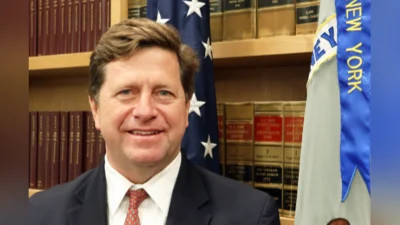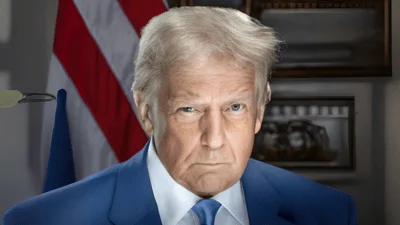CABO VERDE: Tier 2
The Government of Cabo Verde does not fully meet the minimum standards for the elimination of trafficking but is making significant efforts to do so. The government demonstrated overall increasing efforts compared to the previous reporting period, considering the impact of the COVID-19 pandemic on its anti-trafficking capacity; therefore Cabo Verde remained on Tier 2. These efforts included drafting standard operating procedures for victim identification and referral to services. The government identified and referred to care potential child trafficking victims and continued ongoing prosecutions of alleged traffickers. However, the government did not meet the minimum standards in several key areas. Data sharing and coordination among government agencies remained weak. The Observatory for Monitoring and Rapid Identification of Situations of Trafficking in Persons (the Observatory), while intended to lead national efforts, in practice did not coordinate anti-trafficking activities adequately. Government agencies charged with combating trafficking continued to lack resources and training.
PRIORITIZED RECOMMENDATIONS:
Vigorously investigate and prosecute trafficking offenses and hold convicted traffickers, sex traffickers, and sex tourists accountable in accordance with the law. • Ensure all trafficking cases are prosecuted through the judicial system without political interference rather than resolved through non-judicial means. • Adopt, implement, and train law enforcement, labor inspectors, and other officials on the draft standardized procedures to proactively identify trafficking victims-including among vulnerable populations such as West African migrants, Chinese workers, and Cuban medical professionals-and refer them to care. • Train law enforcement and judicial officials on the anti-trafficking provision of the penal code, Article 271-A. • Empower the Observatory to better coordinate the government’s anti-trafficking response and increase relevant stakeholders’ participation in Observatory activities. • Develop and train officials on a system to compile and share comprehensive anti-trafficking law enforcement and victim identification data among agencies. • Strengthen international law enforcement cooperation to prevent and investigate cases of child sex tourism. • Increase efforts to raise public awareness of human trafficking, including child sex trafficking and domestic servitude.
PROSECUTION
The government maintained anti-trafficking law enforcement efforts. Article 271-A of the penal code criminalized sex trafficking and labor trafficking and prescribed penalties of four to 10 years’ imprisonment; these penalties were sufficiently stringent and, with regard to sex trafficking, commensurate with penalties prescribed for other serious crimes, such as rape. During the reporting period, the government initiated one investigation into an alleged trafficking case involving a foreign domestic worker, continued investigations of 12 cases, initiated prosecution of one defendant, and continued prosecutions of at least three defendants. This was compared with initiating one investigation, continuing 11 investigations, and prosecuting at least three defendants during the previous reporting period. For the second consecutive year, courts did not convict any traffickers. Authorities concluded one investigation initiated during the previous reporting period into an alleged trafficker who sexually exploited her 14-year-old daughter; authorities charged the alleged trafficker with pimping and referred the case for prosecution. Three defendants charged with trafficking in persons and employment of undocumented foreign workers on the island of Sal were awaiting trial at the end of the reporting period. The government did not initiate any child sex tourism investigations during the reporting period, likely due to decreased opportunities for tourism, and by extension, child sex tourism, as a result of the pandemic. During a previous reporting period, the government initiated an investigation of one National Police (PN) officer as part of a broader forced labor investigation; the government reported investigators found insufficient evidence to bring charges against the officer, and the case was closed. The government did not report any investigations, prosecutions, or convictions of government employees complicit in human trafficking offenses during the reporting period. According to isolated reports during previous reporting periods, political intervention in ongoing investigations and prosecutions impeded some law enforcement and judicial efforts.
Law enforcement and justice system officials sometimes lacked adequate understanding of trafficking crimes and anti-trafficking laws, and the judicial system as a whole was overburdened, resulting in weak and inconsistent efforts to identify, investigate, and prosecute trafficking cases. The pandemic reduced court operations from March to June 2020 and exacerbated existing judicial backlogs, including for trafficking cases. Furthermore, a cyber-attack rendered the government’s computer network largely inoperable for two months during the reporting period. The government did not provide specialized training on identifying, investigating, and prosecuting trafficking cases to law enforcement or judicial officials during the reporting period, in part due to pandemic gathering restrictions. This was a decrease compared with training 75 magistrates and child protection actors on child exploitation, including trafficking, during the previous reporting period. The government trained an unknown number of new police officers using a training module on trafficking victim identification previously developed by an international organization. Judicial Police (PJ) presence was limited to the four islands with international airports and the most significant tourism activity, affecting the government’s ability to identify victims, investigate crimes, and collect comprehensive data on other islands; information sharing between agencies remained poor. Government social service providers often resolved intra-familial abuse cases, which could include child sex trafficking, through non-judicial means.
PROTECTION
The government maintained efforts to identify and protect trafficking victims. Case management and the ability to track victim-related statistics were relatively weak in Cabo Verde, and as in previous years, the government did not provide comprehensive statistics on the number of trafficking victims identified and referred to care. The government identified at least one forced labor victim during the reporting period, compared with identifying at least one child sex trafficking victim during the previous reporting period. Authorities identified one foreign woman exploited in domestic servitude and referred her to an international organization for care. The international organization repatriated the victim with the government’s assistance. In addition, the government’s Institute for Children and Adolescents (ICCA) identified and provided assistance to at least 196 vulnerable children, including potential trafficking victims, in 2020, compared with identifying 215 vulnerable children in the previous reporting period. The government did not have a formal mechanism to identify trafficking victims and refer them to care. Border police had written victim identification procedures but did not consistently receive training on the procedures. During the reporting period, the government drafted standard operating procedures (SOPs) for victim identification and referral to services in partnership with an international organization and foreign donor; the SOPs were pending final approval at the end of the reporting period. The government and an international organization held webinars with over 20 government agencies and civil society organizations on the draft procedures.
There were no shelters or services specifically for trafficking victims, but government-funded agencies provided emergency services, shelter, and psycho-social care to at-risk populations and female and child victims of crime, including trafficking victims. ICCA operated a national network to assist child victims of sexual abuse, including referral to care and legal support. Law enforcement and first responders generally referred child victims to ICCA, victims requiring long-term care to the Public Ministry, women to the Cabo Verdean Institute for Gender Equality (ICIEG) or NGOs, and foreign victims to an international organization. Officials acknowledged the ad hoc, informal referral system was insufficient. ICCA did not report screening victims referred to its shelters for trafficking. ICCA operated three shelters on three of Cabo Verde’s nine inhabited islands that provided temporary accommodation and care for child victims of sexual abuse, violence, and abandonment and maintained five protection and social reintegration centers, which provided services for children who experienced prolonged trauma, including trafficking. Two of the centers, located on the islands of Santiago and Sao Vicente, provided 24-hour emergency care, including to child victims from other islands. ICCA had staff on all nine islands. The government funded and provided police security to ICCA and ICIEG shelters.
Law enforcement maintained policies to interview sex trafficking victims in collaboration with psychologists and, in cases of child victims, the victims’ parents, as appropriate, to provide a comfortable and safe environment; but, the government did not report providing these benefits to any victims during the reporting period. Authorities noted it was difficult to provide meaningful protection to victim-witnesses due to the small population and close-knit community. The government provided in-kind support to an NGO project aiming to enhance the justice system’s capacity to support child victims of sexual abuse, including trafficking, and train judicial and child protection actors on victim-centered care. Cabo Verdean law provided legal alternatives to the removal of foreign victims to countries where they may face hardship or retribution; authorities did not report providing these benefits to any victims during the reporting period. The law provided for restitution, but the government did not report pursuing restitution in any cases during the reporting period. In addition, victims could file civil suits against traffickers, but no victims reportedly pursued civil suits during the reporting period, in part due to lack of awareness of the option. There were no reports officials penalized trafficking victims for unlawful acts traffickers compelled them to commit; however, due to the lack of formal victim identification procedures, some victims may have remained unidentified in the law enforcement system.
PREVENTION
The government maintained prevention efforts. The Observatory coordinated the government’s efforts to combat trafficking in persons. The Observatory consisted of officials from the Ministry of Justice and Labor (MJT), PN, PJ, ICCA, ICIEG, Ministry of Education, Family, and Social Inclusion (MEFIS), other government institutions, NGOs, and civil society organizations. The Observatory met once during the reporting period due to pandemic gathering restrictions, compared with five times in the previous reporting period. The government continued implementing the 2018-2021 anti-trafficking national action plan. The MJT led the government’s anti-trafficking efforts; the government allocated 7 million escudos ($77,920) for anti-trafficking activities including the national action plan’s implementation in 2020, the same amount provided in the previous year. Observers reported the Observatory lacked authority and struggled to ensure all members fully participated in Observatory meetings and met their reporting commitments. Due to pandemic-related gathering restrictions, the government did not conduct public awareness events or trainings; however, ICCA conducted child protection campaigns using radio ads, television, posters, community engagement, and distributable materials. ICCA continued to support 20 municipal Committees for the Defense of Children’s and Adolescents’ Rights to prevent child abuse, including child trafficking. ICCA and the PN worked with maritime transportation services to prevent children from traveling alone to neighboring islands where they would be vulnerable to exploitation, including trafficking.
ICCA continued to operate three centers for street children through its Nos Kaza project and six day centers, all of which aimed to reduce the vulnerability of street children to forced labor and sexual abuse, including sex trafficking. MJT collaborated with an international organization to develop a child protection case management system for ICCA and MEFIS to identify and track child victims of exploitation, including child trafficking, but the system was not yet operational by the end of the reporting period. ICCA operated a hotline linked to the PN hotline to report cases of violence against children, including trafficking; although the hotline was always operational, ICCA did not report the number of calls it received in 2020. It was unclear if ICCA trained hotline workers to differentiate trafficking from similar crimes, such as child labor or sexual abuse. The government made efforts to reduce the demand for commercial sex that equated to child sex trafficking, but it did not make efforts to reduce demand for other forms of commercial sex. The Children and Adolescent Committee to Prevent and Combat Sexual Abuse and Exploitation coordinated the government’s efforts combating child sexual abuse, including child sex tourism. The government continued enforcing the Ethics Code of Conduct for Tourism, which included provisions countering child sex tourism. The government did not provide anti-trafficking training to its diplomatic personnel.
TRAFFICKING PROFILE
As reported over the past five years, human traffickers exploit domestic and foreign victims in Cabo Verde, and, to a lesser extent, traffickers exploit victims from Cabo Verde abroad. Traffickers exploit boys and girls, some of whom may be foreign nationals, in sex trafficking on Brava, Santiago, Fogo, Sal, Sao Vicente, and Boa Vista, sometimes through child sex tourism. In the past, observers reported tourists perpetrated child sexual abuse on the islands of Sal, Boa Vista, Sao Vicente, Fogo, and Maio. In some cases, parents have encouraged their daughters to be exploited in commercial sex by tourists, especially Cabo-Verdean Americans, as potential marriage could result in immigrant visas to the United States or remittances to support the family. Authorities identify West African women victims, including Nigerians and Senegalese, of sex trafficking, including on Boa Vista and Sal Islands, and sometimes of sex tourism; in one instance, authorities identified a West African woman exploited in domestic servitude. On Sao Vicente, traffickers have coerced girls as young as 12 years old in sexual exploitation in exchange for drugs. Cabo Verdean children engaged in begging, domestic work, street vending, car washing, and agriculture are vulnerable to trafficking; children used in illicit activities, including drug trafficking, are also vulnerable to trafficking. Children living in impoverished neighborhoods with little state presence are also at risk of trafficking, especially sex trafficking. West African migrants may transit the archipelago en route to exploitive situations in Europe. Cuban medical professionals working in Cabo Verde may have been forced to work by the Cuban government, and Chinese nationals may have been forced to work, including by PRC state-owned enterprises. Some adult migrants from ECOWAS countries may receive low wages and work without contracts, rendering them vulnerable to forced labor and sex trafficking. In 2018, alleged labor traffickers exploited four Chinese nationals, two girls and two men, in the retail sector; observers suspect there may be organized syndicates engaging in similar forced labor exploitation in the country. NGOs reported Nigerian criminal syndicates exploited Cabo Verdean women in sex trafficking in Brazil in 2018. In a previous reporting period, labor traffickers exploited a Cabo Verdean man in Europe.
Source: U.S Department of State, Bureau of Oceans and International Environmental and Scientific Affairs








